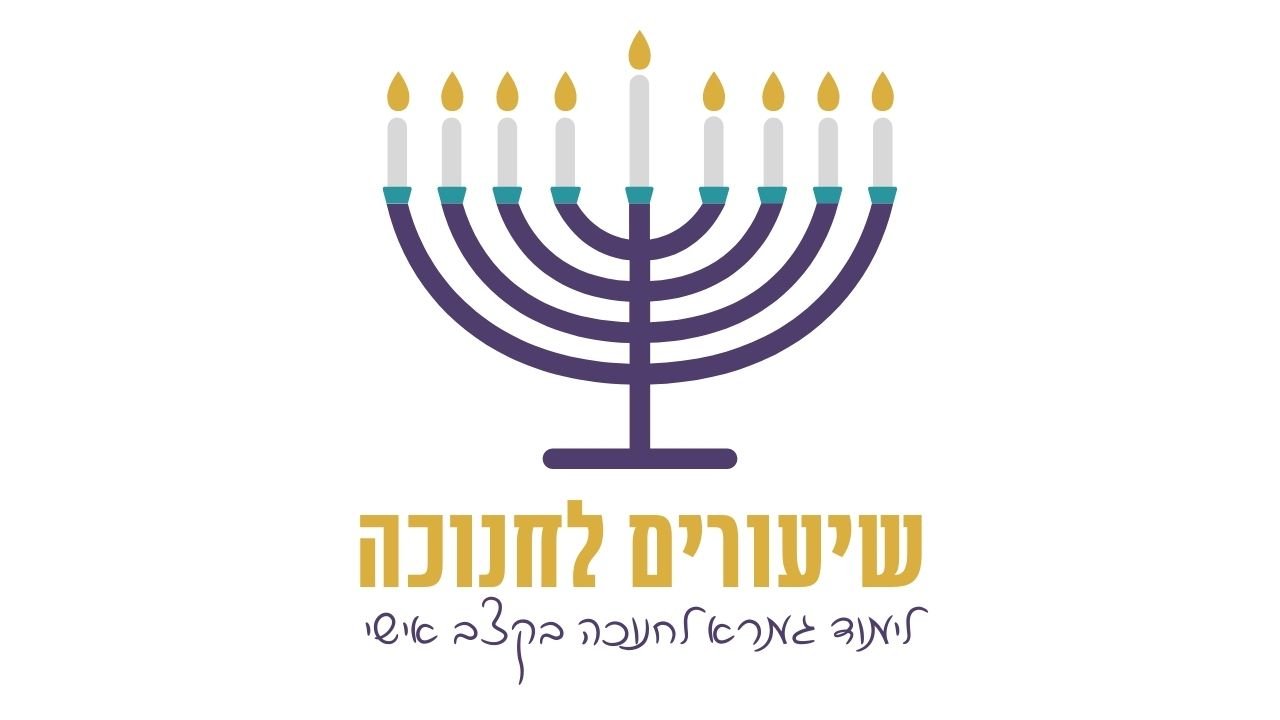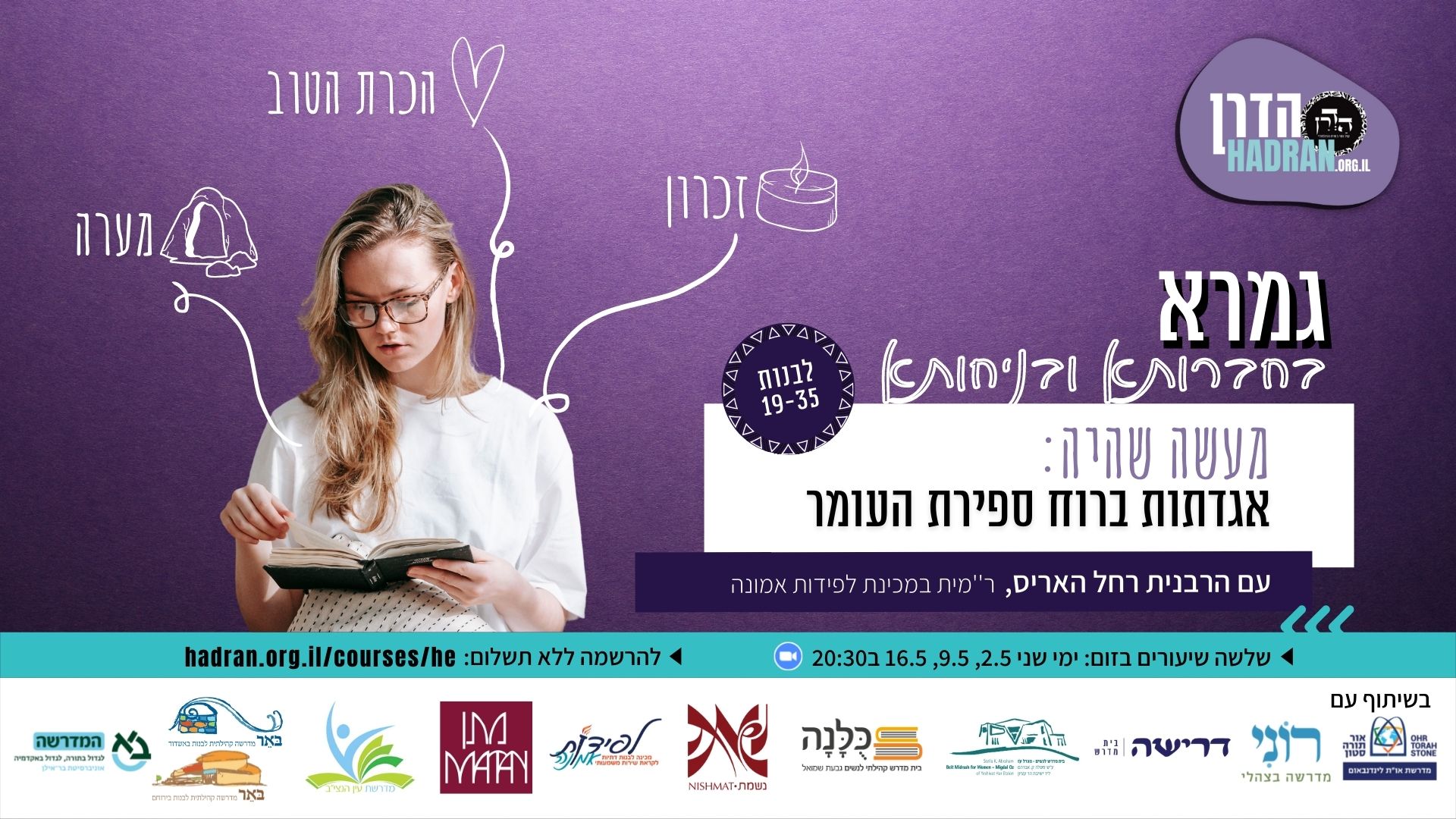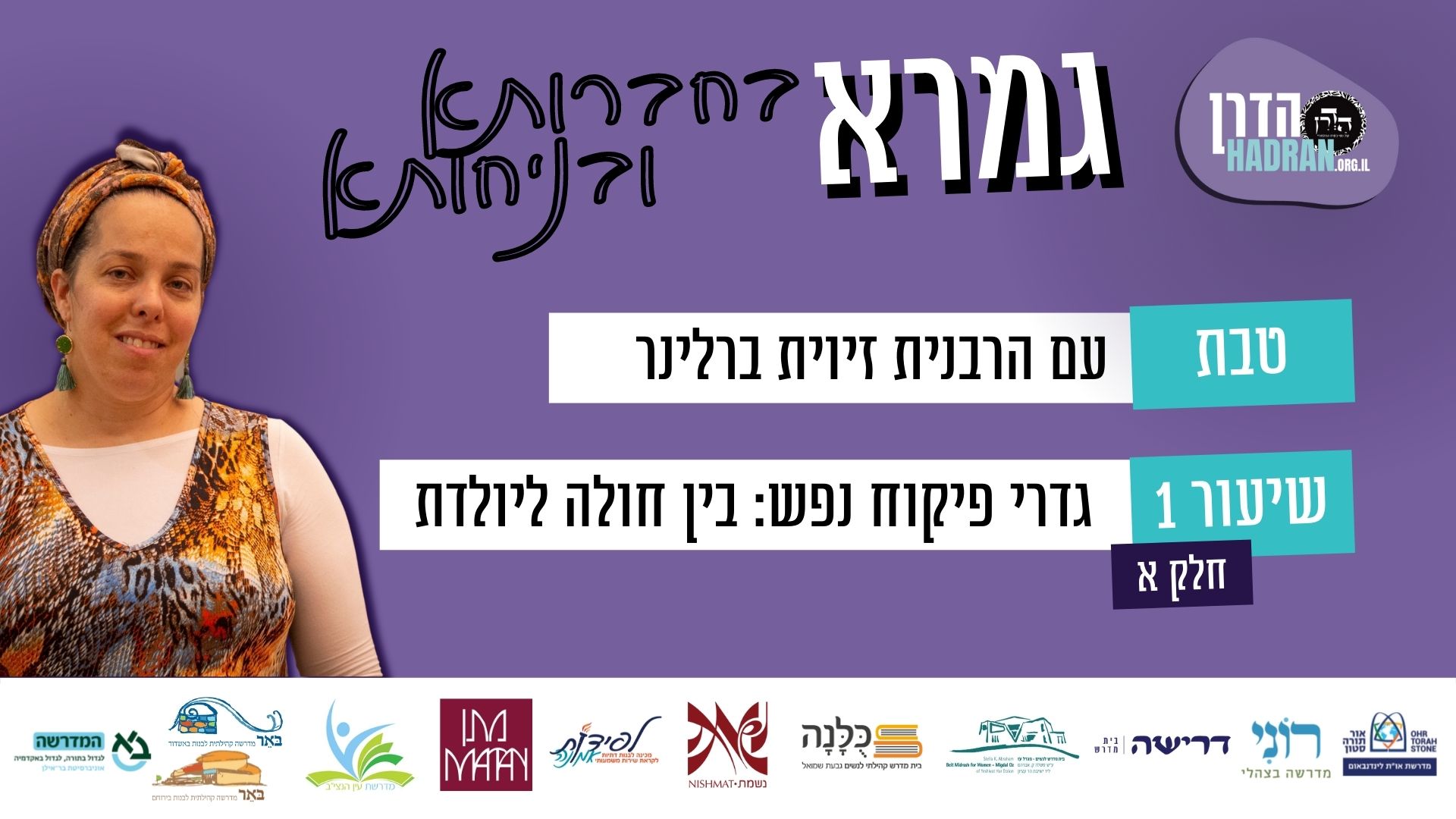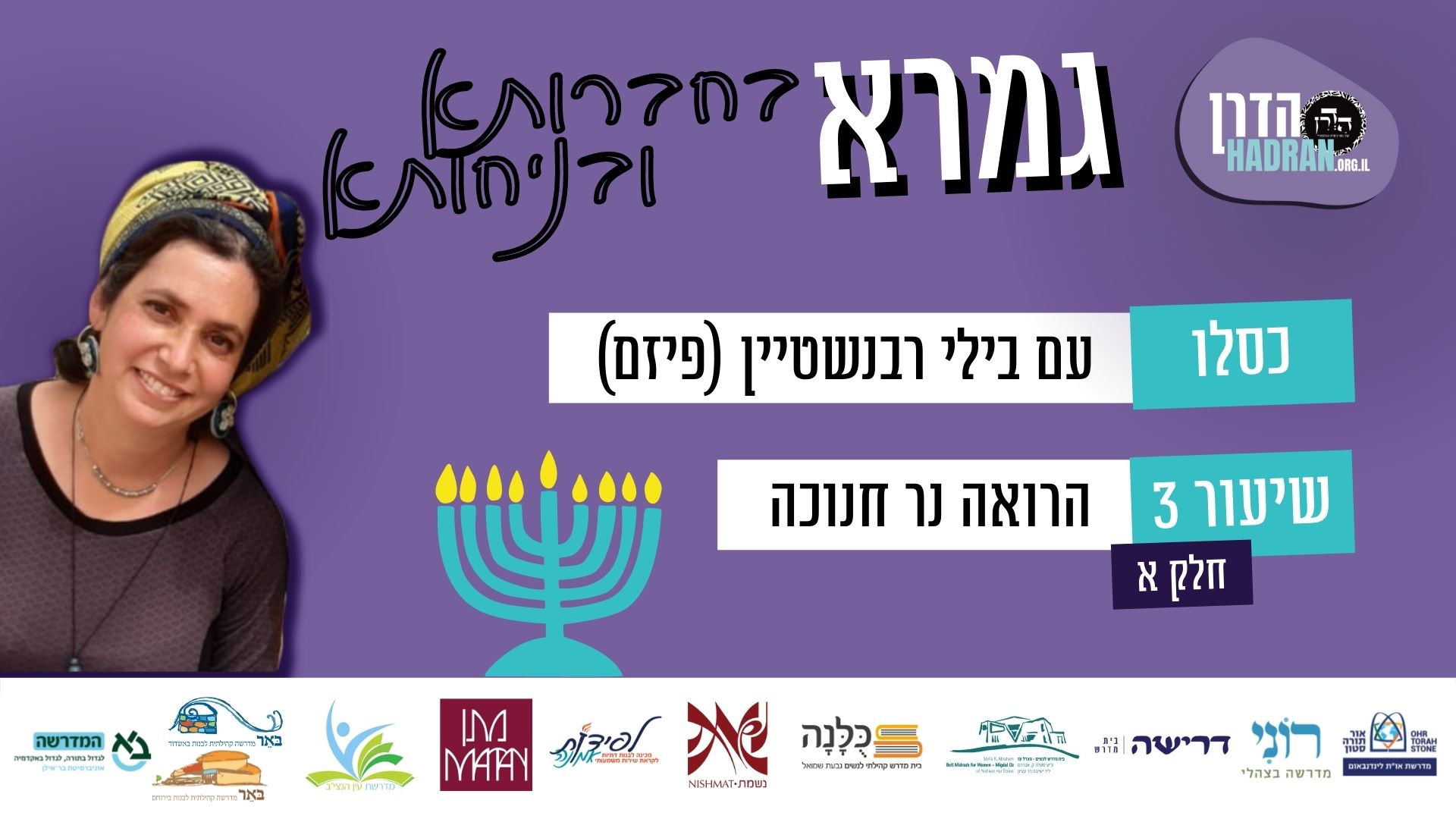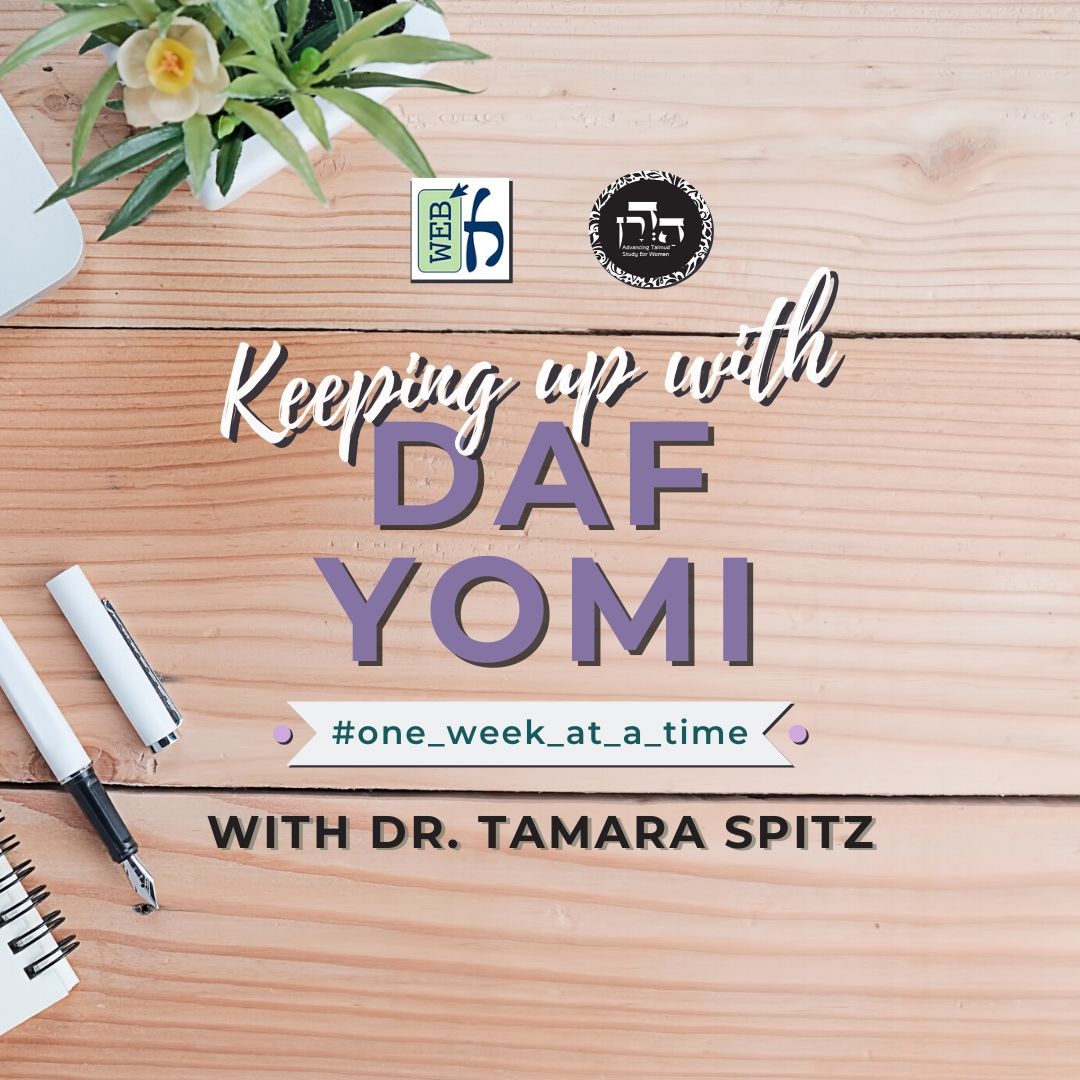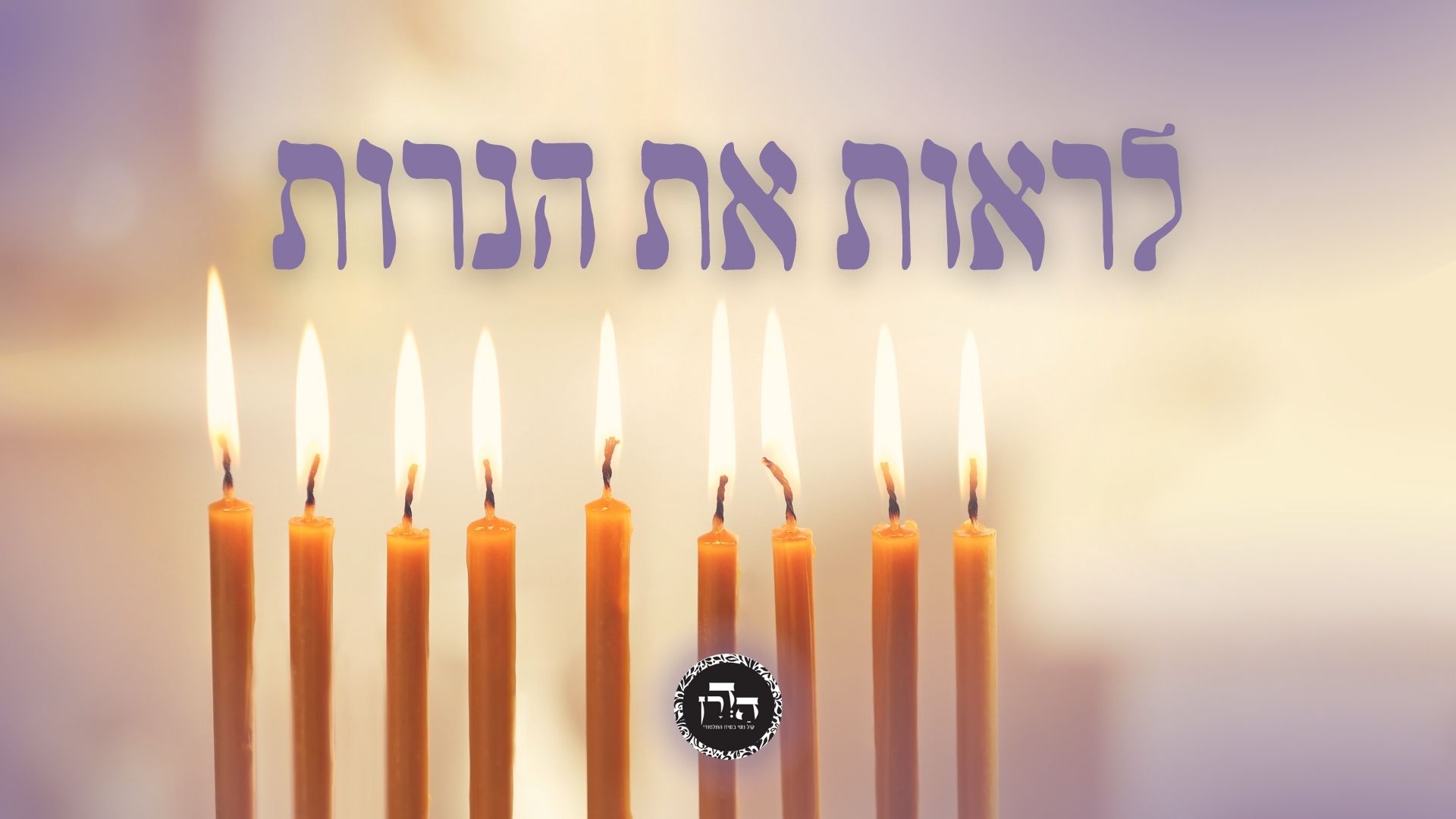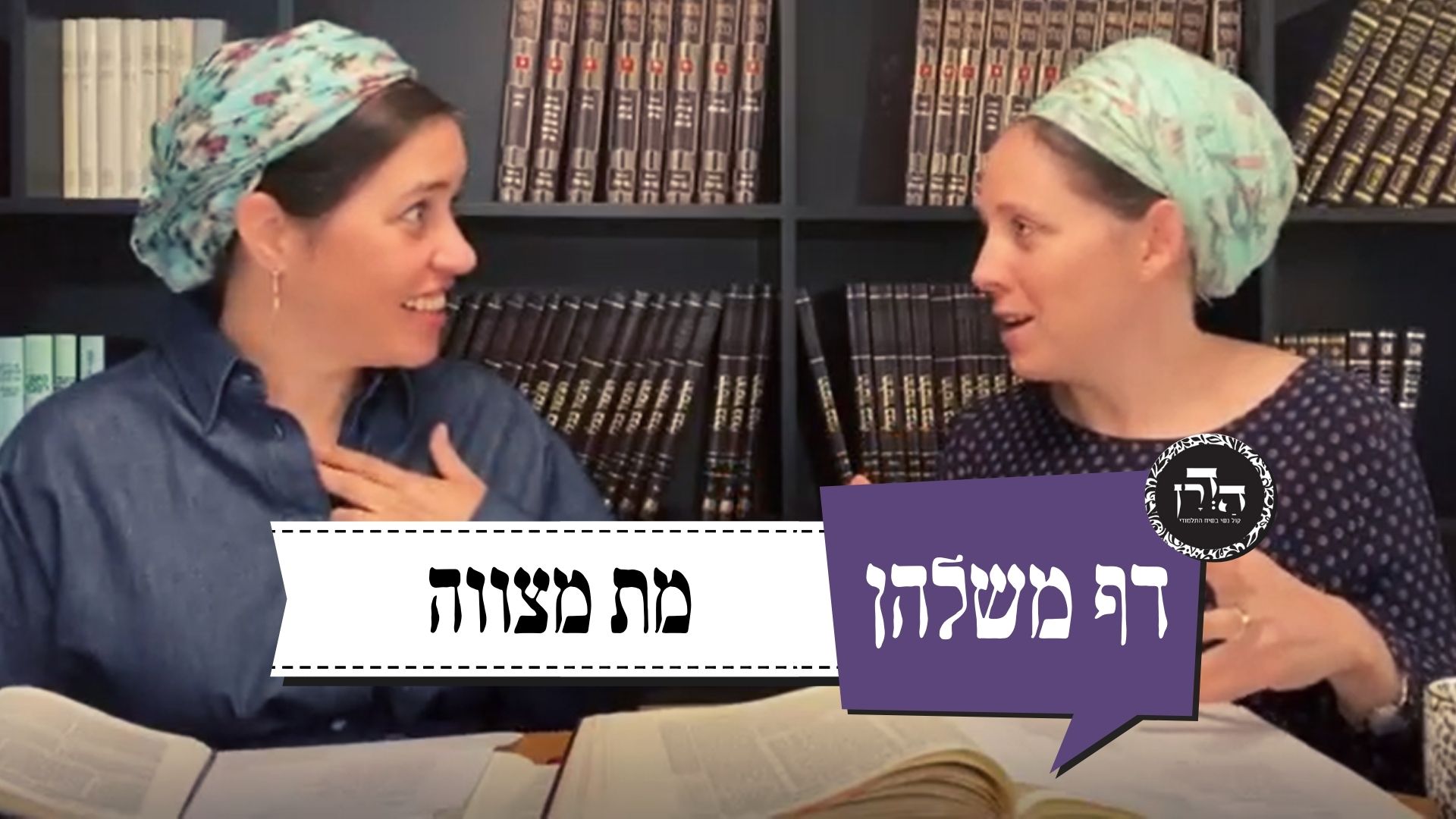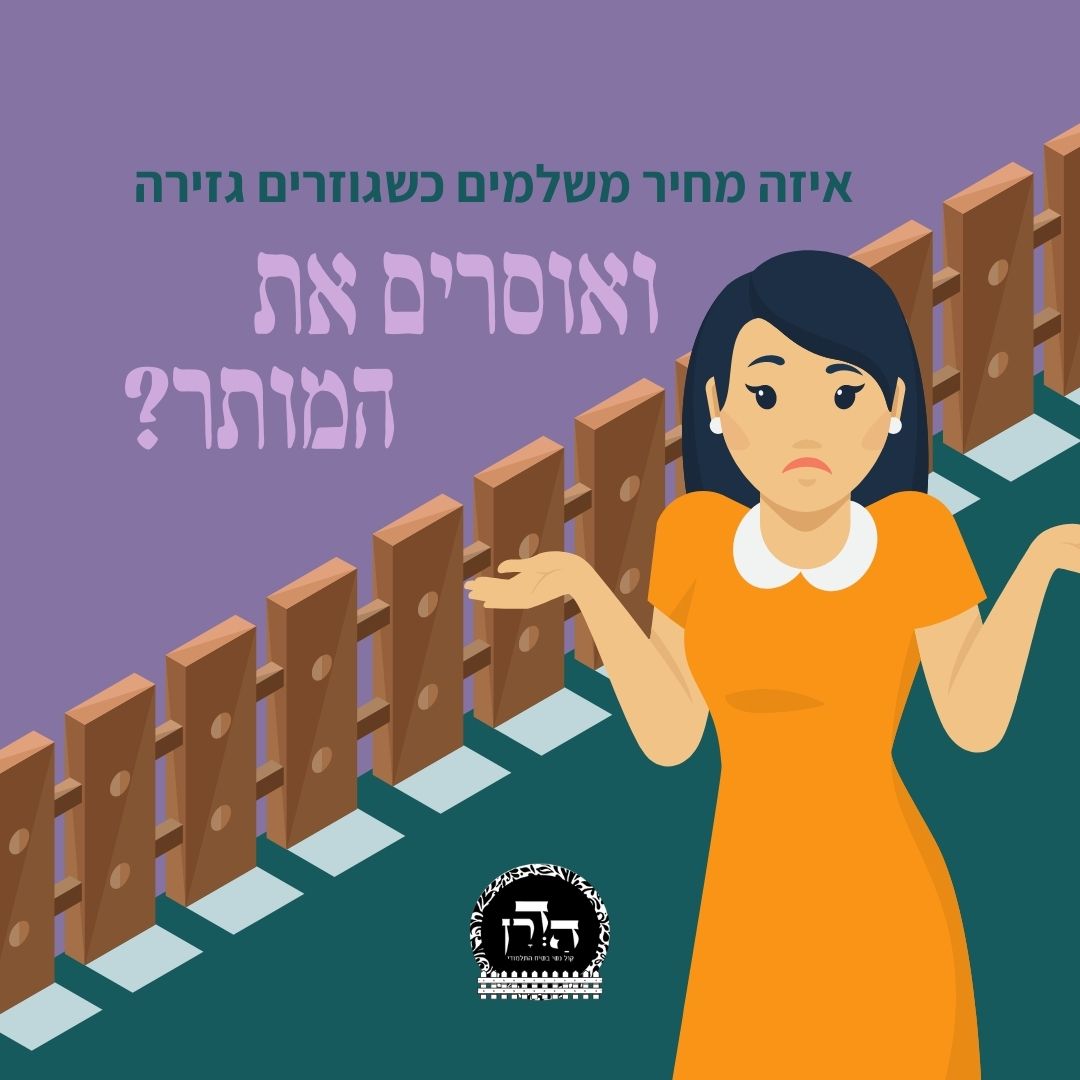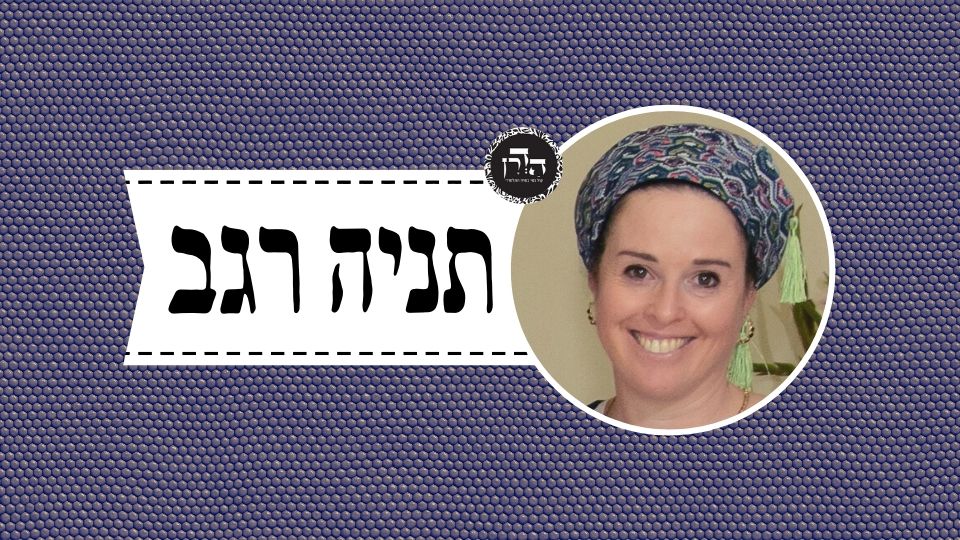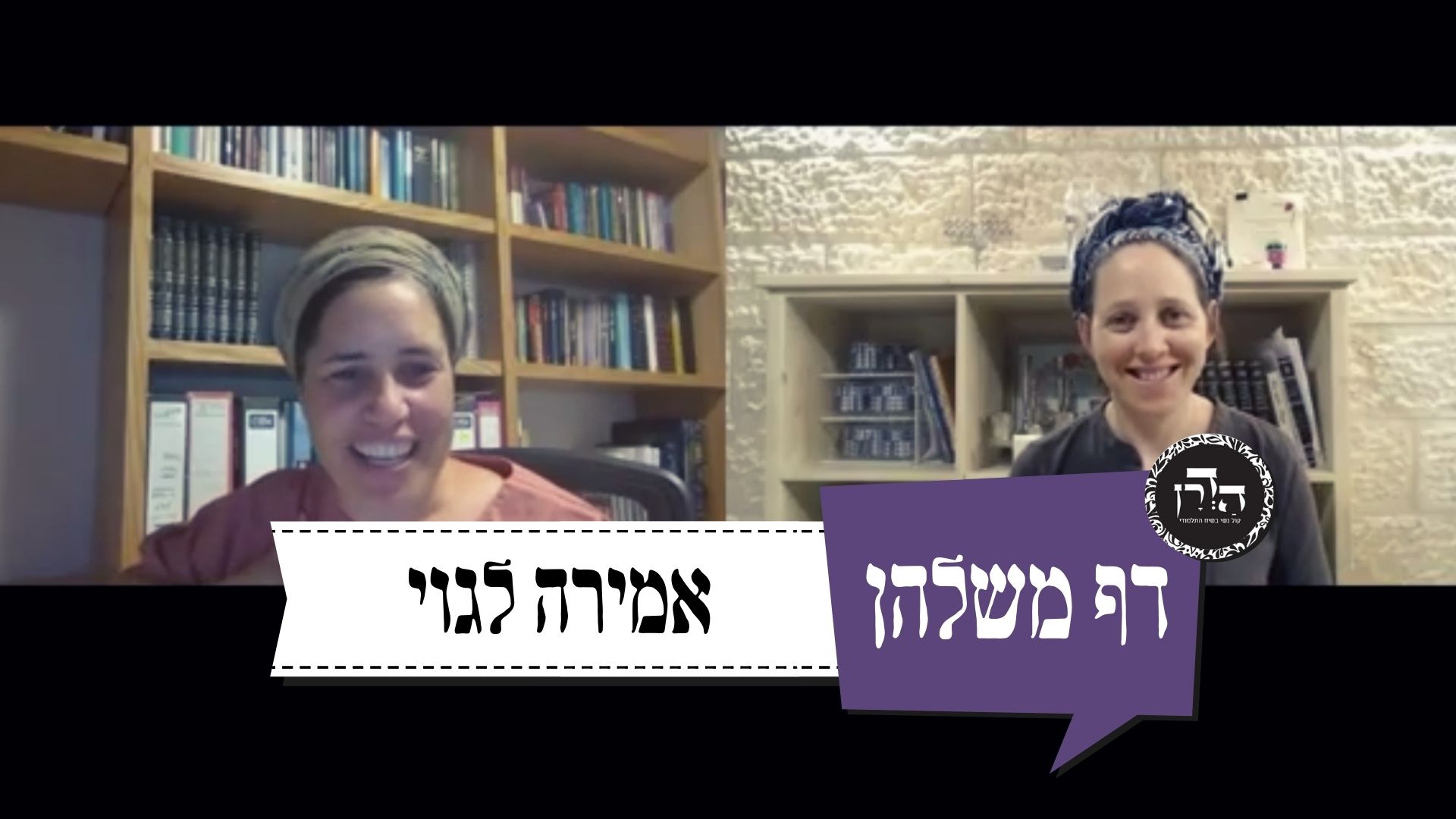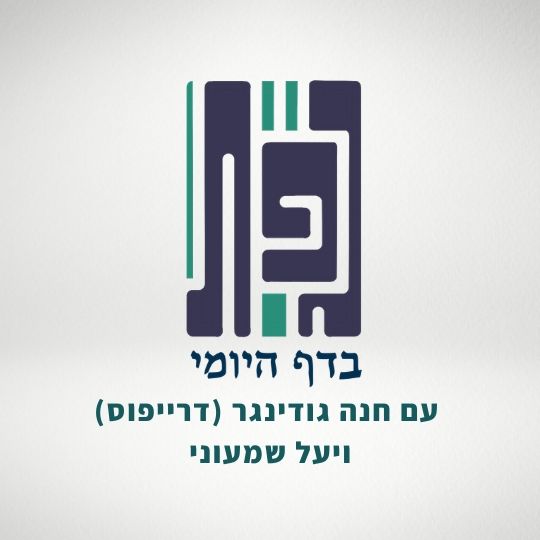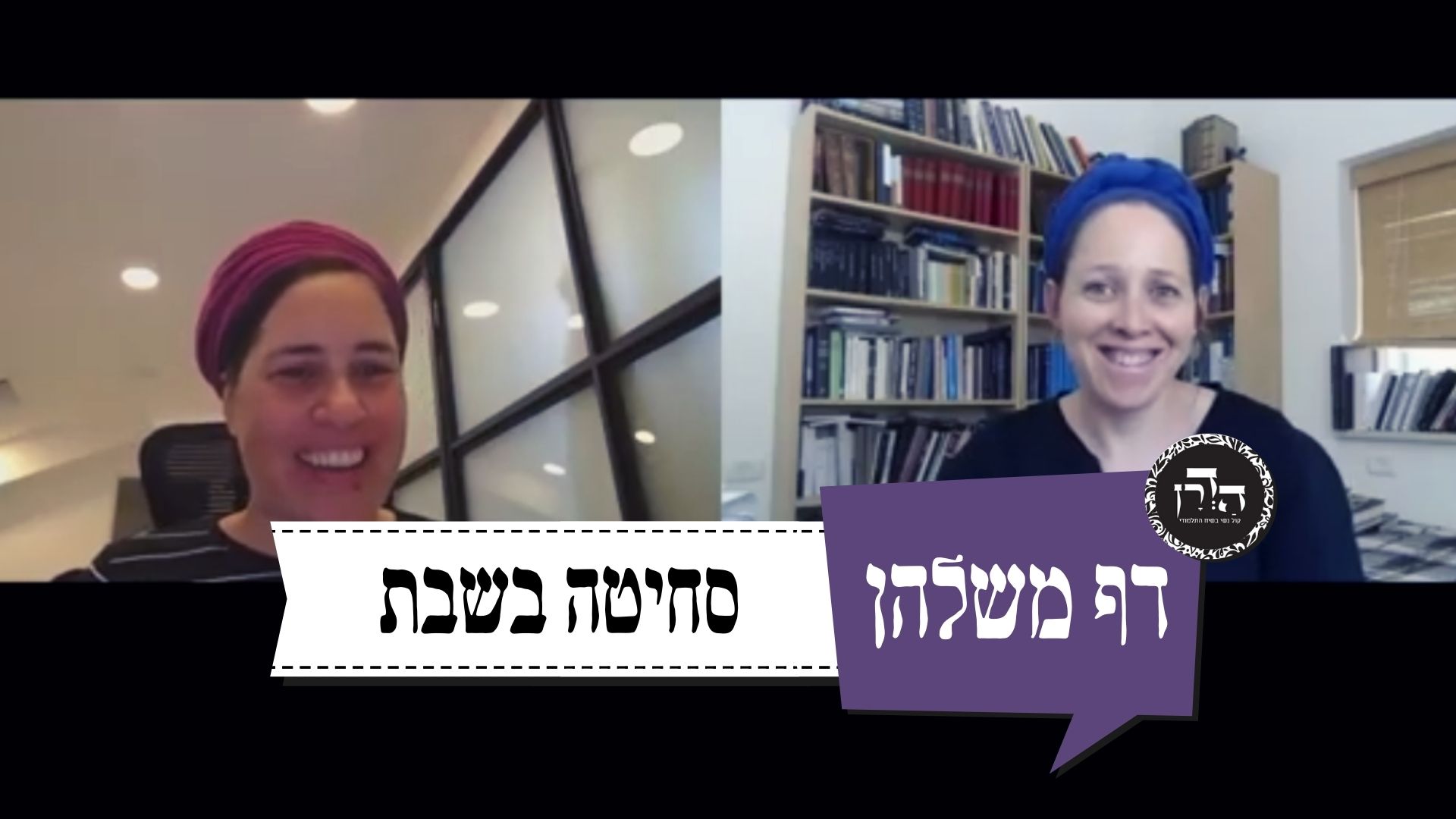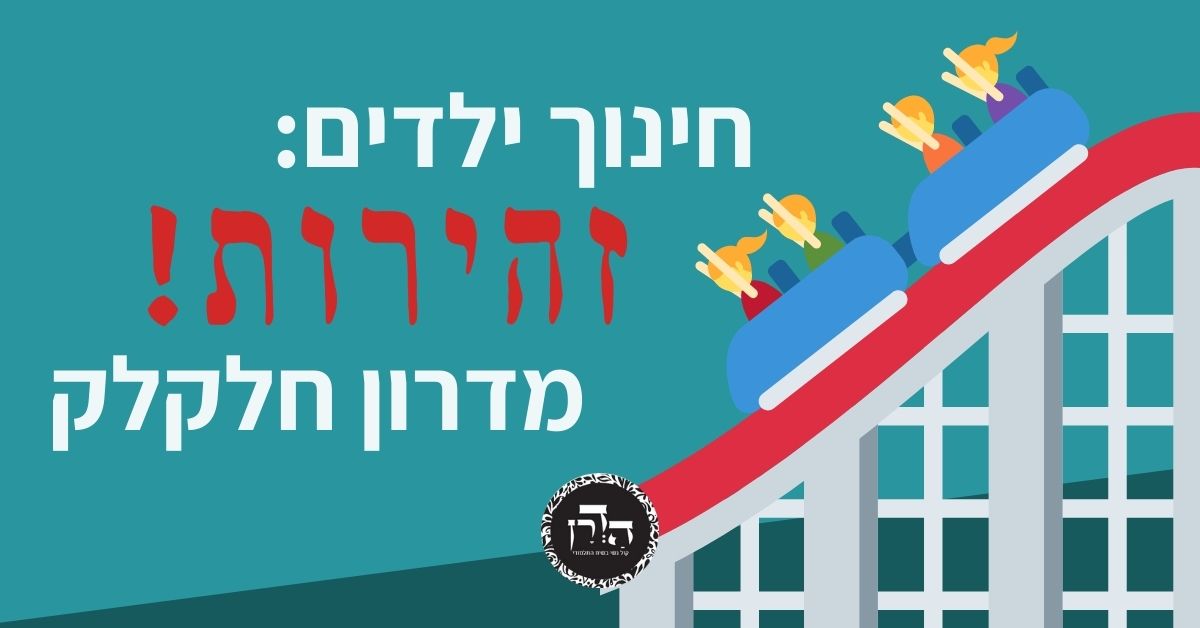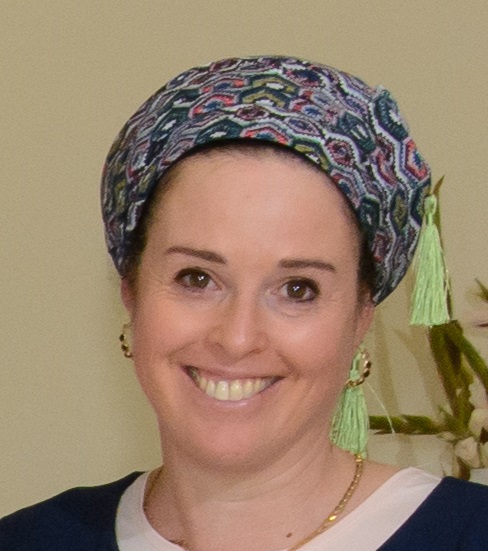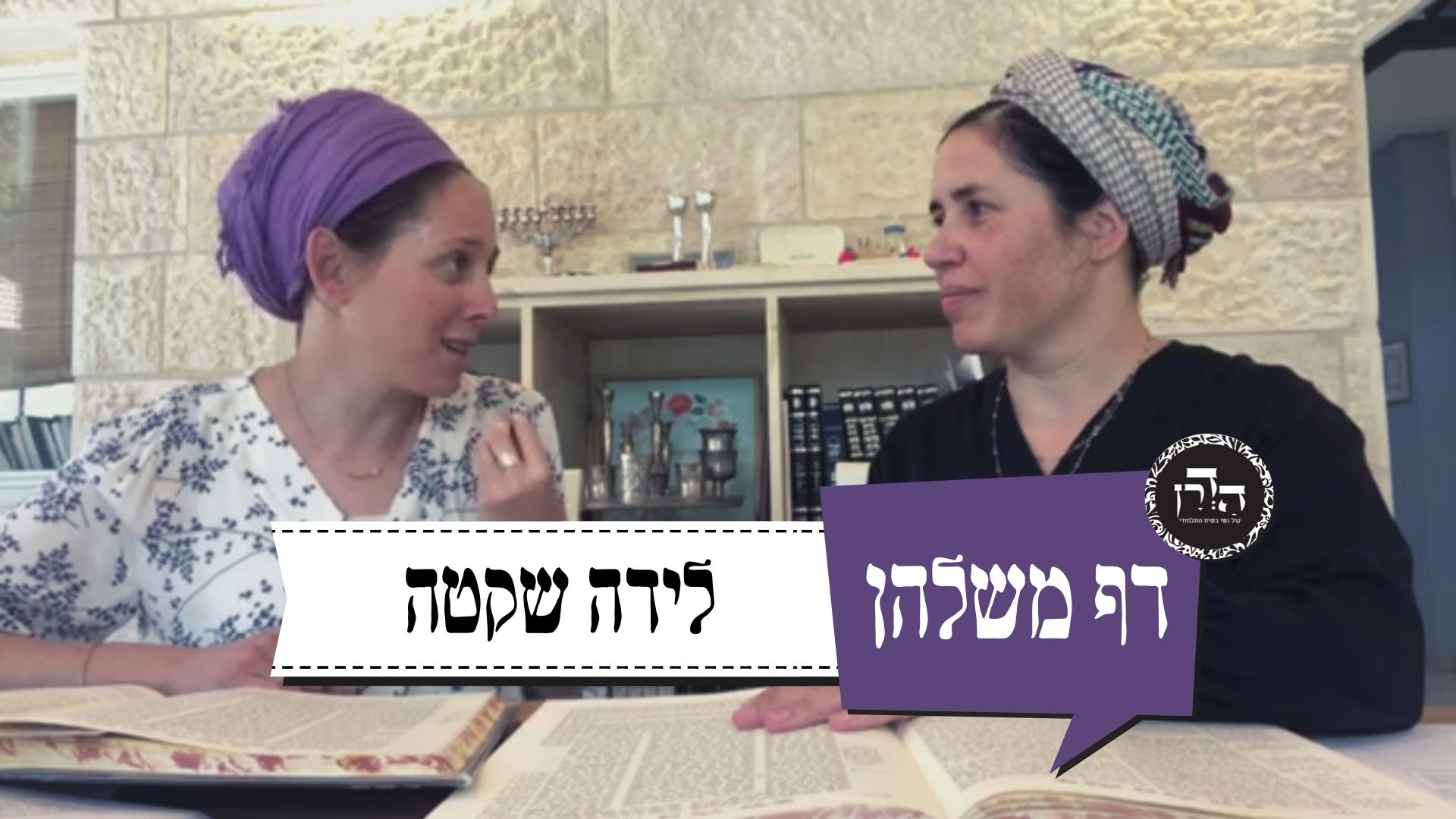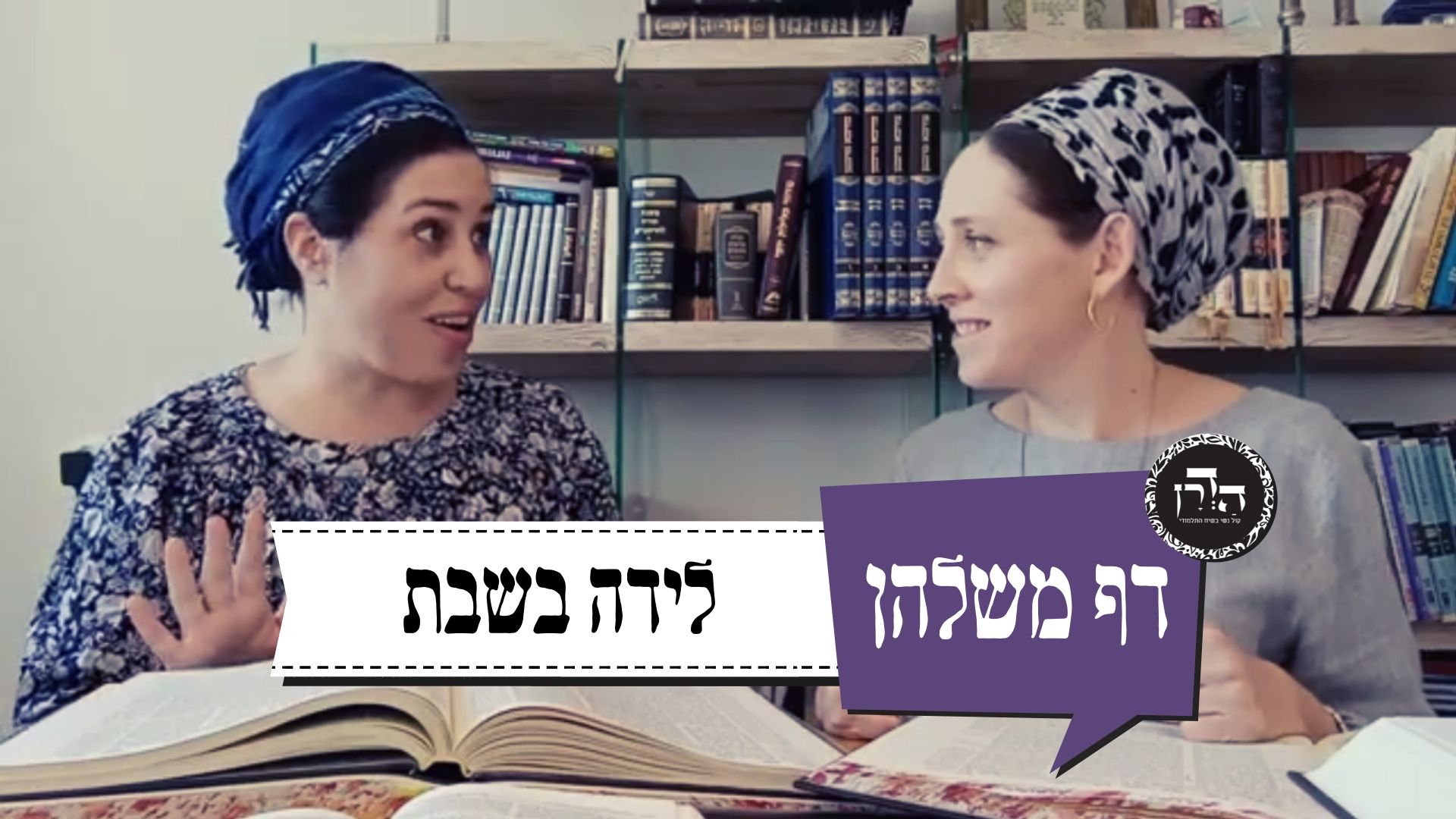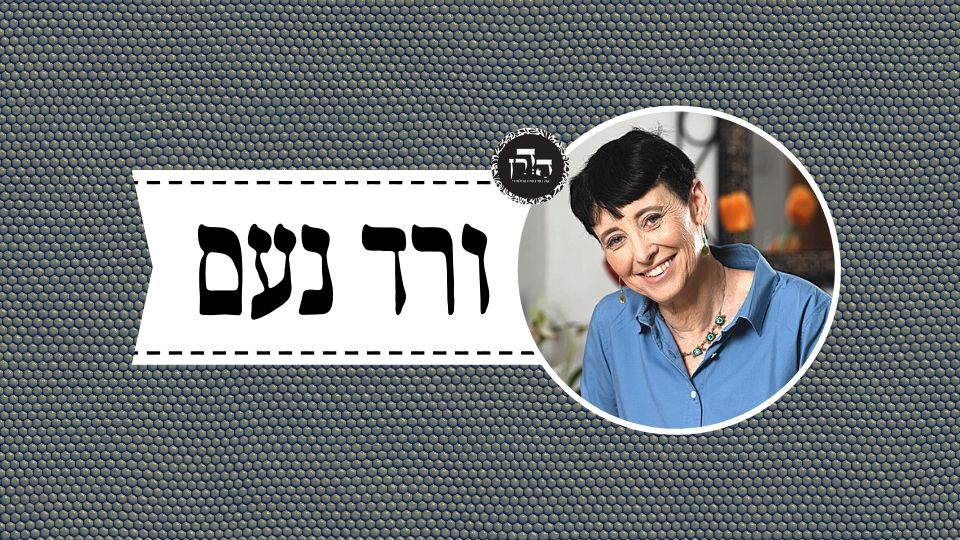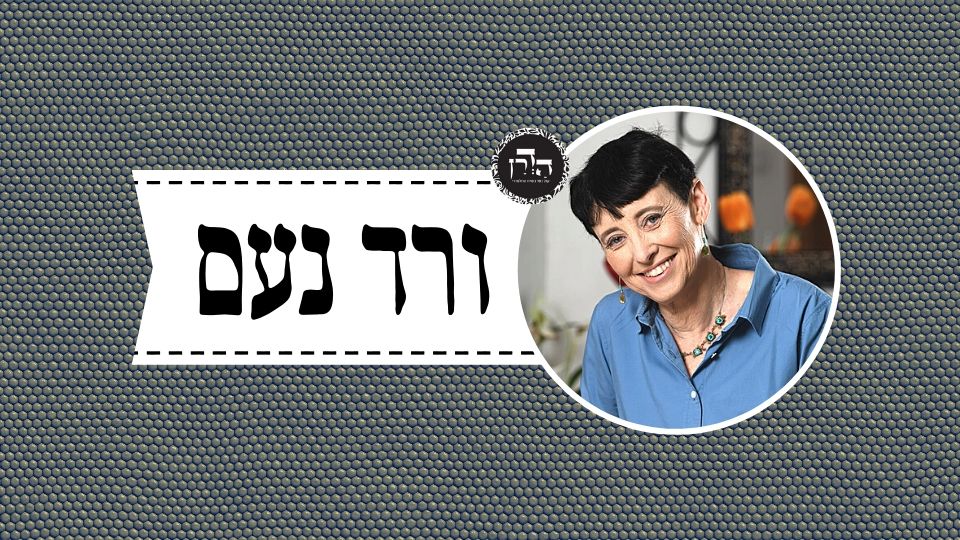שבת כח
מִמִּשְׁכָּן. כְּתִיב הָכָא: ״זֹאת הַתּוֹרָה אָדָם כִּי יָמוּת בְּאֹהֶל״, וּכְתִיב הָתָם: ״וַיִּפְרוֹשׂ אֶת הָאֹהֶל עַל הַמִּשְׁכָּן״. מַה לְּהַלָּן שֶׁל פִּשְׁתָּן קָרוּי ״אֹהֶל״ — אַף כָּאן שֶׁל פִּשְׁתָּן קָרוּי ״אֹהֶל״. אִי מַה לְּהַלָּן שְׁזוּרִין וְחוּטָן כָּפוּל שִׁשָּׁה, אַף כָּאן שְׁזוּרִין וְחוּטָן כָּפוּל שִׁשָּׁה? — תַּלְמוּד לוֹמַר: ״אֹהֶל״ ״אֹהֶל״ רִיבָּה. אִי ״אֹהֶל״ ״אֹהֶל״ רִיבָּה, אֲפִילּוּ כׇּל מִילֵּי נָמֵי! אִם כֵּן גְּזֵירָה שָׁוָה מַאי אַהֲנִי לֵיהּ?!
written in the context of the Tabernacle. It is written here, in the discussion of the laws of ritual impurity: “This is the law: When a man dies in a tent, every one that comes into the tent, and everything that is in the tent, shall be impure seven days” (Numbers 19:14), and it is written there: “And he spread the tent over the Tabernacle, and put the covering of the tent above upon it; as the Lord commanded Moses” (Exodus 40:19). Just as below, with regard to the Tabernacle, the tent was made of linen and is considered a tent, so too, here, with regard to the halakhot of ritual impurity imparted by a corpse, only a tent made of linen is considered a tent. The Gemara asks: If so, derive the following from that same verbal analogy: Just as below the linen threads in the Tabernacle were specifically threads that were twisted and the threads were folded six times, so too, here, in all of the halakhot pertaining to a tent over a corpse, the threads must be twisted and their threads folded six times. The verse states the word tent, tent several times to amplify and include even a tent made of linen not identical to the Tabernacle. The Gemara asks: If the repetition of the word tent, tent several times amplifies, even all things should be included among those items that can receive ritual impurity as a tent. The Gemara answers: This amplification cannot be that far-reaching, as, if so, the verbal analogy of tent, tent, that teaches us to derive the tent over a corpse from the Tabernacle, what purpose does it serve if everything is included? Rather, certainly the amplification is not absolute. Through the combination of the verbal analogy and the amplification, it is derived that this halakha applies specifically to linen.
וְאֵימָא: מַה לְּהַלָּן קְרָשִׁים, אַף כָּאן קְרָשִׁים! אָמַר קְרָא ״וְעָשִׂיתָ קְרָשִׁים לַמִּשְׁכָּן״. מִשְׁכָּן קָרוּי מִשְׁכָּן, וְאֵין קְרָשִׁים קְרוּיִין מִשְׁכָּן. אֶלָּא מֵעַתָּה, ״וְעָשִׂיתָ מִכְסֶה לָאֹהֶל״ — הָכִי נָמֵי מִכְסֶה לָא אִיקְּרִי ״אֹהֶל״. אֶלָּא הָא דְּבָעֵי רַבִּי אֶלְעָזָר: עוֹר בְּהֵמָה טְמֵאָה מַהוּ שֶׁיִּטַּמֵּא בְּאֹהֶל הַמֵּת. הַשְׁתָּא עוֹר בְּהֵמָה טְהוֹרָה לָא מִטַּמֵּא, עוֹר בְּהֵמָה טְמֵאָה מִיבַּעְיָא?! — שָׁאנֵי הָתָם דַּהֲדַר אַהְדְּרֵיהּ קְרָא, דִּכְתִיב: ״וְנָשְׂאוּ אֶת יְרִיעוֹת הַמִּשְׁכָּן וְאֶת אֹהֶל מוֹעֵד מִכְסֵהוּ וּמִכְסֵה הַתַּחַשׁ אֲשֶׁר עָלָיו״. מַקִּישׁ עֶלְיוֹן לְתַחְתּוֹן — מַה תַּחְתּוֹן קָרוּי ״אֹהֶל״, אַף עֶלְיוֹן קָרוּי ״אֹהֶל״.
And perhaps say: Just as below, in the Tabernacle, there were beams supporting the tent, so too, here, in the laws of ritual impurity, a tent made of beams should also be considered a tent. The Gemara responds that the verse said: “And you shall make the beams for the Tabernacle of acacia wood, standing up” (Exodus 26:15). From the language of the verse, it is derived that the Tabernacle, i.e., the curtains alone, is called Tabernacle, and the beams are not called Tabernacle, because they merely facilitate the Tabernacle. The Gemara rejects this: But if that is so, based on an analysis of the language of the verse, it says there: “And you shall make a covering for the tent of rams’ skins dyed red and a covering of teḥashim above” (Exodus 26:14), then in that case, too, say that the covering is not considered a tent. If so, however, what of the dilemma raised by Rabbi Elazar: With regard to the hide of a non-kosher animal over a corpse, what is the ruling? Can it become ritually impure as a tent over a corpse? If the covering of the Tabernacle is not considered a tent, now, the hide of a kosher animal that covered the Tabernacle cannot become ritually impure. If that is so, is it necessary to mention that the hide of a non-kosher animal cannot become ritually impure? The Gemara answers: The cases are not comparable because it is different there, in the case of the covering of animal hides, because the verse subsequently restored its status as a tent by uniting the tent and its covering, as it is written: “They shall bear the curtains of the Tabernacle, and the Tent of Meeting, its covering, and the covering of taḥash that is upon it” (Numbers 4:25). The verse juxtaposes the upper to the lower covering; just as the lower covering is considered a tent, so too, the upper covering is considered a tent.
גּוּפָא. בָּעֵי רַבִּי אֶלְעָזָר: עוֹר בְּהֵמָה טְמֵאָה מַהוּ שֶׁיִּטַּמֵּא טוּמְאַת אֹהָלִין. מַאי קָמִיבַּעְיָא לֵיהּ? אָמַר רַב אַדָּא בַּר אַהֲבָה: תַּחַשׁ שֶׁהָיָה בִּימֵי מֹשֶׁה קָמִיבַּעְיָא לֵיהּ — טָמֵא הָיָה אוֹ טָהוֹר הָיָה? אָמַר רַב יוֹסֵף: מַאי תִּיבְּעֵי לֵיהּ, תְּנֵינָא: לֹא הוּכְשְׁרוּ לִמְלֶאכֶת שָׁמַיִם אֶלָּא עוֹר בְּהֵמָה טְהוֹרָה בִּלְבַד!
Rabbi Elazar’s dilemma was mentioned above, and now the Gemara discusses the matter itself. Rabbi Elazar raised a dilemma: With regard to the hide of a non-kosher animal over a corpse, what is the ruling? Can it become ritually impure as a tent over a corpse? The Gemara clarifies: What is the essence of his dilemma? Rav Adda bar Ahava said: The taḥash that existed in the time of Moses is at the crux of Rabbi Elazar’s dilemma. Was it non-kosher or was it kosher? Rav Yosef said: What is his dilemma? Didn’t we learn explicitly: Only the hide of a kosher animal was deemed suitable for heavenly service? Certainly, the taḥash was a kosher species.
מֵתִיב רַבִּי אַבָּא, רַבִּי יְהוּדָה אוֹמֵר: שְׁנֵי מִכְסָאוֹת הָיוּ, אֶחָד שֶׁל עוֹרוֹת אֵילִים מְאָדָּמִים וְאֶחָד שֶׁל עוֹרוֹת תְּחָשִׁים. רַבִּי נְחֶמְיָה אוֹמֵר: מִכְסֶה אֶחָד הָיָה, וְדוֹמֶה כְּמִין תְּלָא אִילָן. וְהָא תְּלָא אִילָן טָמֵא הוּא! הָכִי קָאָמַר: כְּמִין תְּלָא אִילָן הוּא, שֶׁיֵּשׁ בּוֹ גְּווֹנִין הַרְבֵּה, וְלֹא תְּלָא אִילָן. דְּאִילּוּ הָתָם טָמֵא, וְהָכָא טָהוֹר. אָמַר רַב יוֹסֵף: אִי הָכִי הַיְינוּ דִּמְתַרְגְּמִינַן ״סָסְגּוֹנָא״, שֶׁשָּׂשׂ בִּגְווֹנִין הַרְבֵּה.
Rabbi Abba raised an objection. Rabbi Yehuda says: There were two coverings for the Tabernacle, one made of the reddened hides of rams and one of the hides of teḥashim. Rabbi Neḥemya says: There was only one covering for the Tabernacle, half of which was made of rams’ hides and half from the hides of teḥashim. And teḥashim were similar to the species of undomesticated animals called tela ilan. The Gemara asks: But isn’t a tela ilan a non-kosher creature? The Gemara emends this statement: This is what Rabbi Neḥemya intended to say: It was like a tela ilan in that it was multicolored; however, it was not an actual tela ilan. There, the tela ilan is non-kosher, and here, the covering of the tent was made from kosher animals. Rav Yosef said: If so, that is the reason that we translate the word taḥash as sasgona, which means that it rejoices [sas] in many colors [gevanim].
רָבָא אָמַר: עוֹר בְּהֵמָה טְמֵאָה דְּמִטַּמֵּא בְּאֹהֶל הַמֵּת מֵהָכָא, דְּתַנְיָא: ״עוֹר״ ״אוֹ בְעוֹר״ — רִיבָּה עוֹר בְּהֵמָה טְמֵאָה. וְשֶׁלָּקָה בְּיַד כֹּהֵן, קָצַץ מִכּוּלָּן וְעָשָׂה אַחַת מֵהֶן, מִנַּיִן? — תַּלְמוּד לוֹמַר: ״אוֹ בְּכׇל מְלֶאכֶת עוֹר״. וְאִיכָּא לְמִיפְרַךְ, מָה לִנְגָעִים שֶׁכֵּן שְׁתִי וָעֵרֶב טָמֵא בָּהֶן.
Rava said that the proof that the hide of a non-kosher animal becomes ritually impure in a tent over a corpse is derived from here, as it was taught in a baraita that it is stated in the halakhot of ritual impurity of leprosy that the leprosy could be: “Either in the warp, or in the woof, whether they be of linen, or of wool; or in a hide, or in any thing made of hide” (Leviticus 13:48). The verse could have simply stated: Or hide, and it said instead: Or in a hide. The Sages said: These words, or in a hide, amplify to include the hide of a non-kosher animal as well as hide that was afflicted in the hands of a priest, i.e., before the owner showed it to the priest there was no leprosy but it became leprous while in the hands of the priest, that they too become ritually impure. If one cut pieces from each of these types and made of them a single cloth, from where is it derived that it can become ritually impure? The verse states from the broader amplification: Or in anything made of hide. The Gemara remarks: There is room to refute this parallel, rendering it impossible to derive the laws of ritual impurity imparted by a corpse from the laws of leprosy. What is the comparison to leprosy with regard to which the Torah is stringent, as even the warp and woof that have not been woven into a garment can become ritually impure from it, which is not the case in impurity imparted by a corpse?
אֶלָּא גָּמַר מִשְּׁרָצִים: דְּתַנְיָא: ״עוֹר״ — אֵין לִי אֶלָּא עוֹר בְּהֵמָה טְהוֹרָה, עוֹר בְּהֵמָה טְמֵאָה מִנַּיִן? תַּלְמוּד לוֹמַר ״אוֹ עוֹר״. וְאִיכָּא לְמִיפְרַךְ: מָה לִשְׁרָצִים שֶׁכֵּן מְטַמְּאִין בְּכַעֲדָשָׁה. נְגָעִים יוֹכִיחוּ. וְחָזַר הַדִּין, לֹא רְאִי זֶה כִּרְאִי זֶה וְלֹא רְאִי זֶה כִּרְאִי זֶה, הַצַּד הַשָּׁוֶה שֶׁבָּהֶן — שֶׁעוֹר טָמֵא בָּהֶן, וְעָשָׂה עוֹר בְּהֵמָה טְמֵאָה כְּעוֹר בְּהֵמָה טְהוֹרָה. אַף אֲנִי אָבִיא אֹהֶל הַמֵּת שֶׁעוֹר טָמֵא בּוֹ, וְנַעֲשֶׂה בּוֹ עוֹר בְּהֵמָה טְמֵאָה כְּעוֹר בְּהֵמָה טְהוֹרָה.
Rather, one could say that he derived it from the laws of the ritual impurity of creeping animals, as it is stated with regard to them: “And upon whatsoever any of them, when they are dead, does fall, it shall be impure; whether it be any vessel of wood, or garment, or hide, or sack, whatsoever vessel it be, with which any work is done” (Leviticus 11:32). As it was taught in a baraita: From the use of the word hide, I have derived nothing other than the fact that the hide of a kosher animal becomes ritually impure from contact with a creeping animal; however, from where is it derived that the hide of a non-kosher animal can become ritually impure? This is derived from the amplification, as the verse states: Or hide. Since, with regard to the ritual impurity of creeping animals the laws of the hides of kosher and non-kosher animals are identical, it is derived that this is also true with regard to the halakhot of ritual impurity imparted by a corpse. Once again, the Gemara says: There is room to refute this derivation and say: What is the comparison to creeping animals, as their legal status is stringent because they become ritually impure even if they are as small as a lentil-bulk, which is not true in the case of a corpse? In order for a corpse to transmit ritual impurity, it must be larger, an olive-bulk. Therefore, the Gemara says: If so, the case of leprosy can prove that the fact that creeping animals that are a lentil-bulk transmit impurity is not a factor in whether or not a non-kosher animal hide can become ritually impure. Leprosy that is a lentil-bulk does not transmit impurity and, nevertheless, the hide of a non-kosher animal becomes ritually impure from it. And the derivation has reverted to its starting point. The aspect of this case is not like the aspect of that case and the aspect of that case is not like the aspect of this case, as each case has its own unique stringencies. However, their common denominator is that hide, in general, is ritually impure in both cases, and the Torah rendered the hide of a non-kosher animal equal to the hide of a kosher animal in that it becomes ritually impure. I will also bring the additional halakha of a tent over a corpse made of the hide of a non-kosher animal, and in that case as well, the hide of a non-kosher animal will be rendered equal to the hide of a kosher animal.
אֲמַר לֵיהּ רָבָא מִבַּרְנִישׁ לְרַב אָשֵׁי: אִיכָּא לְמִיפְרַךְ — מַה לְּהַצַּד הַשָּׁוֶה שֶׁבָּהֶן שֶׁכֵּן טְמֵאִין בְּפָחוֹת מִכְּזַיִת, תֹּאמַר בְּמֵת שֶׁאֵינוֹ מְטַמֵּא אֶלָּא בִּכְזַיִת.
Rava from Barnish said to Rav Ashi: There is still room to refute this statement and say: What is the comparison to leprosy and creeping animals? Their common denominator is that they both transmit ritual impurity when smaller than an olive-bulk. Can you say the same in the case of a corpse, which only transmits ritual impurity when it is at least an olive-bulk? Therefore, despite the differences between them, these two halakhot are both more stringent than the laws of ritual impurity imparted by a corpse, and the status of a non-kosher animal hide cannot be derived from them.
אֶלָּא אָמַר רָבָא מִבַּרְנִישׁ:
Rather, Rava from Barnish said it can be derived in the following manner:
אָתְיָא בְּקַל וָחוֹמֶר מִנּוֹצָה שֶׁל עִזִּים, שֶׁאֵין מִטַּמֵּא בִּנְגָעִים — מִטַּמֵּא בְּאֹהֶל הַמֵּת, עוֹר בְּהֵמָה טְמֵאָה שֶׁמִּטַּמְּאָה בִּנְגָעִים — אֵינוֹ דִּין שֶׁמִּטַּמְּאָה בְּאֹהֶל הַמֵּת.
It is derived through an a fortiori inference from goats’ hair. Although goats’ hair does not become ritually impure from leprosy, it does become ritually impure as a tent over a corpse; with regard to the hide of a non-kosher animal that becomes ritually impure from leprosy, is it not the case that it becomes ritually impure as a tent over a corpse?
וְאֶלָּא הָא דְּתָנֵי רַב יוֹסֵף לֹא הוּכְשְׁרוּ בִּמְלֶאכֶת שָׁמַיִם אֶלָּא עוֹר בְּהֵמָה טְהוֹרָה בִּלְבַד — לְמַאי הִלְכְתָא? לִתְפִילִּין. תְּפִילִּין בְּהֶדְיָא כְּתִיב בְּהוּ ״לְמַעַן תִּהְיֶה תּוֹרַת ה׳ בְּפִיךָ״, מִן הַמּוּתָּר בְּפִיךְ!
Since the conclusion was that the hide of even a non-kosher animal can become ritually impure as a tent over a corpse, it is not necessary to assume that the covering of the Tabernacle was made specifically from the hide of a kosher animal. And, if so, that which Rav Yosef taught: Only the hide of a kosher animal was suitable for heavenly service, for what halakha is that relevant, as it is clearly not relevant to the Tabernacle? The Gemara replies: This halakha was stated with regard to phylacteries, which may be prepared only from the hide of a kosher animal. The Gemara asks: Phylacteries? Why did Rav Yosef need to state that halakha? It is written explicitly with regard to them: “And it shall be for a sign unto you upon your hand, and for a memorial between your eyes, that the law of the Lord may be in your mouth” (Exodus 13:9). The Sages derived from there that the phylacteries must be prepared from that which is permitted to be eaten in your mouth.
אֶלָּא לְעוֹרָן. וְהָאָמַר אַבָּיֵי: שִׁין שֶׁל תְּפִילִּין הֲלָכָה לְמֹשֶׁה מִסִּינַי!
Rather, the Gemara explains that this halakha of Rav Yosef was said only with regard to the leather of the boxes that house the phylacteries, which must be crafted from the hide of a kosher animal. It was not referring to the parchment on which the portions of the Torah inserted into the phylacteries are written. The Gemara asks: Didn’t Abaye say: The obligation to make a letter shin protruding on the phylacteries of one’s head is a halakha transmitted to Moses from Sinai? Since Torah law addresses the boxes of the phylacteries, presumably their legal status is parallel to that of the parchment and the prohibition against preparing them from the hide of a non-kosher animal is by Torah law as well.
אֶלָּא לְכוֹרְכָן בְּשַׂעֲרָן וּלְתוֹפְרָן בְּגִידָן. הָא נָמֵי הֲלָכָה לְמֹשֶׁה מִסִּינַי הוּא, דְּתַנְיָא: תְּפִילִּין מְרוּבָּעוֹת — הֲלָכָה לְמֹשֶׁה מִסִּינַי, נִכְרָכוֹת בְּשַׂעֲרָן וְנִתְפָּרוֹת בְּגִידָן!
Rather, the Gemara explains that Rav Yosef’s halakha comes to teach that one must tie the parchments upon which the portions of the Torah are written in the phylacteries with a kosher animal’s hair, as well as sew the phylacteries with a kosher animal’s sinews. The Gemara asks: The source of these halakhot is also a halakha transmitted to Moses from Sinai, as it was taught in a baraita: The requirement that phylacteries must be square is a halakha transmitted to Moses from Sinai, as is the requirement that they must be tied with their hair and sewn with their sinews.
אֶלָּא לִרְצוּעוֹת. וְהָאָמַר רַבִּי יִצְחָק רְצוּעוֹת שְׁחוֹרוֹת הֲלָכָה לְמֹשֶׁה מִסִּינַי? נְהִי דִּגְמִירִי שְׁחוֹרוֹת, טְהוֹרוֹת מִי גְּמִירִי?
Rather, the Gemara says that Rav Yosef came to teach with regard to the halakha of the straps of the phylacteries. The Gemara asks: Didn’t Rabbi Yitzḥak say: The straps of the phylacteries must be black is a halakha transmitted to Moses from Sinai? The Gemara responds: Although we learned this halakha, which states that the straps must be black, did we also learn that they must be from kosher animals? Rav Yosef was certainly referring to straps when he said that all heavenly service must be performed with the hides of kosher animals.
מַאי הָוֵי עֲלֵהּ דְּתַחַשׁ שֶׁהָיָה בִּימֵי מֹשֶׁה? אָמַר רַבִּי אִלָּעָא אָמַר רַבִּי שִׁמְעוֹן בֶּן לָקִישׁ, אוֹמֵר הָיָה רַבִּי מֵאִיר: תַּחַשׁ שֶׁהָיָה בִּימֵי מֹשֶׁה בְּרִיָּה בִּפְנֵי עַצְמָהּ הָיָה, וְלֹא הִכְרִיעוּ בּוֹ חֲכָמִים אִם מִין חַיָּה הוּא, אִם מִין בְּהֵמָה הוּא. וְקֶרֶן אַחַת הָיְתָה לוֹ בְּמִצְחוֹ, וּלְפִי שָׁעָה נִזְדַּמֵּן לוֹ לְמֹשֶׁה וְעָשָׂה מִמֶּנּוּ מִשְׁכָּן וְנִגְנַז.
The Gemara asks: What is the halakhic conclusion reached about this matter of the taḥash that existed in the days of Moses? Rabbi Ela said that Rabbi Shimon ben Lakish said that Rabbi Meir used to say: The taḥash that existed in the days of Moses was a creature unto itself, and the Sages did not determine whether it was a type of undomesticated animal or a type of domesticated animal. And it had a single horn on its forehead, and this taḥash happened to come to Moses for the moment while the Tabernacle was being built, and he made the covering for the Tabernacle from it. And from then on, the taḥash was suppressed and is no longer found.
מִדְּקָאָמַר קֶרֶן אַחַת הָיְתָה לוֹ בְּמִצְחוֹ, שְׁמַע מִינַּהּ טָהוֹר הָיָה, דְּאָמַר רַב יְהוּדָה: שׁוֹר שֶׁהִקְרִיב אָדָם הָרִאשׁוֹן קֶרֶן אַחַת הָיְתָה לוֹ בְּמִצְחוֹ, שֶׁנֶּאֱמַר: ״וְתִיטַב לַה׳ מִשּׁוֹר פָּר מַקְרִין מַפְרִיס״. ״מַקְרִין״ תַּרְתֵּי מַשְׁמַע! אָמַר רַב נַחְמָן בַּר יִצְחָק — ״מַקְרָן״ כְּתִיב. וְלִיפְשׁוֹט מִינֵּיהּ דְּמִין בְּהֵמָה הוּא? כֵּיוָן דְּאִיכָּא ״קֶרֶשׁ״ דְּמִין חַיָּה הוּא וְלֵית לֵיהּ אֶלָּא חֲדָא קֶרֶן — אִיכָּא לְמֵימַר מִין חַיָּה הוּא.
The Gemara comments: From the fact that it is said that the taḥash had a single horn on its forehead, conclude from this that it was kosher, as Rav Yehuda said in a similar vein: The ox that Adam, the first man, sacrificed as a thanks-offering for his life being spared, had a single horn on its forehead, as it is stated: “And it shall please the Lord better than a horned [makrin] and hooved ox” (Psalms 69:32). The word makrin means one with a horn. The Gemara asks: On the contrary, makrin indicates that it has two horns. Rav Naḥman bar Yitzḥak said: Despite the fact that it is vocalized in the plural, it is written mikeren without the letter yod to indicate that it had only a single horn. The Gemara asks: If so, let us resolve from the same baraita that just as it was derived from the ox of Adam, the first man, that an animal with one horn is kosher, derive that an animal with one horn is a type of domesticated animal. The Gemara answers: Since there is the keresh which is a type of undomesticated animal, and it has only a single horn, it is also possible to say that the taḥash is a type of undomesticated animal. This dilemma was not resolved.
מַתְנִי׳ פְּתִילַת הַבֶּגֶד שֶׁקִּיפְּלָהּ וְלֹא הִבְהֲבָהּ, רַבִּי אֱלִיעֶזֶר אוֹמֵר: טְמֵאָה הִיא, וְאֵין מַדְלִיקִין בָּהּ. רַבִּי עֲקִיבָא אוֹמֵר טְהוֹרָה הִיא, וּמַדְלִיקִין בָּהּ.
MISHNA: The wick of a garment, i.e., cloth made into a wick for a lamp, that one folded it into a size and shape suitable for a wick, but did not yet singe it slightly in order to facilitate its lighting, Rabbi Eliezer says: This wick is ritually impure. With regard to the laws of ritual impurity, it can, like other garments, still become ritually impure and one may not light with it on Shabbat. Rabbi Akiva says: It is ritually pure and one may even light with it on Shabbat.
גְּמָ׳ בִּשְׁלָמָא לְעִנְיַן טוּמְאָה, בְּהָא פְּלִיגִי: דְּרַבִּי אֱלִיעֶזֶר סָבַר קִיפּוּל אֵינוֹ מוֹעִיל, וּבְמִילְּתַיהּ קַמָּיְיתָא קָיְימָא. וְרַבִּי עֲקִיבָא סָבַר קִיפּוּל מוֹעִיל, וּבַטּוֹלֵי בַּטְּלַהּ.
GEMARA: The Gemara asks: Granted, with regard to ritual impurity, the reasons for their disagreement are clear and this is their dispute: Rabbi Eliezer holds that folding alone is ineffective in altering the identity of the garment and it retains its original status. It can become ritually impure like any other garment. Rabbi Akiva holds that folding is effective, and it negates its garment status, and therefore, it can no longer become ritually impure.
אֶלָּא לְעִנְיַן הַדְלָקָה בְּמַאי פְּלִיגִי? אָמַר רַבִּי אֶלְעָזָר אָמַר רַב אוֹשַׁעְיָא, וְכֵן אָמַר רַב אַדָּא בַּר אַהֲבָה: הָכָא בְּשָׁלֹשׁ עַל שָׁלֹשׁ מְצוּמְצָמוֹת עָסְקִינַן, וּבְיוֹם טוֹב שֶׁחָל לִהְיוֹת עֶרֶב שַׁבָּת עָסְקִינַן. דְּכוּלֵּי עָלְמָא אִית לְהוּ דְּרַבִּי יְהוּדָה דְּאָמַר: מַסִּיקִין בְּכֵלִים וְאֵין מַסִּיקִין בְּשִׁבְרֵי כֵלִים. וּדְכוּלֵּי עָלְמָא אִית לְהוּ דְּעוּלָּא, דְּאָמַר עוּלָּא: הַמַּדְלִיק צָרִיךְ שֶׁיַּדְלִיק בָּרוֹב הַיּוֹצֵא. רַבִּי אֱלִיעֶזֶר סָבַר קִיפּוּל אֵינוֹ מוֹעִיל, וְכֵיוָן דְּאַדְלֵיק בֵּיהּ פּוּרְתָּא הָוְיָא לֵיהּ שֶׁבֶר כְּלִי, וְכִי קָא מַדְלֵיק — בְּשֶׁבֶר כְּלִי קָמַדְלֵיק. וְרַבִּי עֲקִיבָא סָבַר קִיפּוּל מוֹעִיל, וְאֵין תּוֹרַת כְּלִי עָלָיו, וְכִי קָמַדְלֵיק — בְּעֵץ בְּעָלְמָא קָמַדְלֵיק.
However, with regard to lighting on Shabbat what is at the crux of their dispute? Rabbi Elazar said that Rav Oshaya said, and Rav Adda bar Ahava said likewise: Here we are dealing with a cloth that is precisely three by three fingerbreadths and we are dealing with a Festival that occurred on Shabbat eve. And everyone is of the opinion that the halakha is in accordance with the opinion of Rabbi Yehuda, who said that on a Festival one may only kindle a fire with whole vessels, as it is permitted to carry them and they do not have set-aside [muktze] status; however, one may not kindle a fire using broken vessels, i.e., vessels that broke on the Festival. Since they broke on the Festival itself, they are classified as an entity that came into being [nolad] on the Festival, and the halakha prohibits moving them. And, similarly, everyone is of the opinion that the halakha is in accordance with the opinion of Ulla, as Ulla said: One who lights a lamp must light most of the wick that protrudes from the lamp. Based on these assumptions, the dispute in the mishna can be understood as follows: Rabbi Eliezer holds that folding alone is ineffective in negating the wick’s vessel status, and once one lights only a small part of it, it thereby becomes a broken vessel, as part of it burns and the remainder is less than three by three fingerbreadths. A smaller cloth is no longer considered significant. Since he is required to light most of the protruding wick and, as mentioned above, it is prohibited to light broken vessels, he may not light the folded garment. And Rabbi Akiva held that folding is effective and, immediately when he folded it, the garment no longer has the status of a vessel. It was not considered a vessel even before he lit it, and when he lights it, it is as if he were lighting plain wood, not a vessel that broke on the Festival.
אָמַר רַב יוֹסֵף, הַיְינוּ דְּתָנֵינָא: ״שָׁלֹשׁ עַל שָׁלֹשׁ מְצוּמְצָמוֹת״ וְלָא יָדַעְנָא לְמַאי הִלְכְתָא.
Rav Yosef said, that is what I learned: Three by three exactly. And I did not know to what halakha this was relevant. Rav Yosef received from his teachers that the baraita is referring to a case of three by three exactly, and he did not know why it was significant to establish the baraita in a case of exactly three by three and no more.
וּמִדְּקָא מְתָרֵץ רַב אַדָּא בַּר אַהֲבָה אַלִּיבָּא דְּרַבִּי יְהוּדָה, שְׁמַע מִינַּהּ כְּרַבִּי יְהוּדָה סְבִירָא לֵיהּ. וּמִי אָמַר רַב אַדָּא בַּר אַהֲבָה הָכִי? וְהָאָמַר רַב אַדָּא בַּר אַהֲבָה:
The Gemara adds incidentally: And from the fact that Rav Adda bar Ahava interpreted this mishna in accordance with the opinion of Rabbi Yehuda, conclude from this that he holds in accordance with the opinion of Rabbi Yehuda. Did Rav Adda bar Ahava actually say this? Didn’t Rav Adda bar Ahava himself say:

